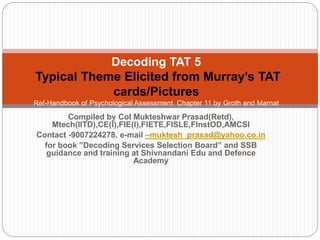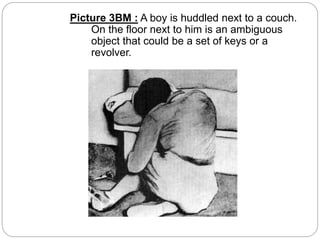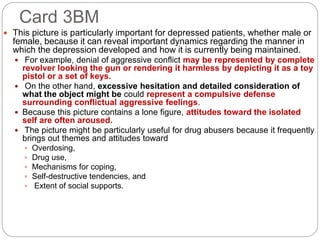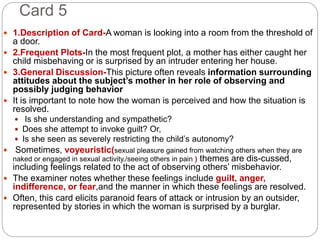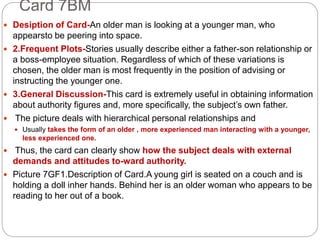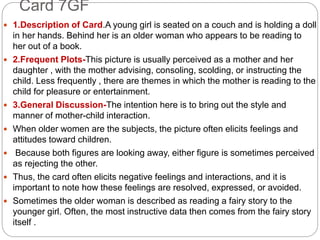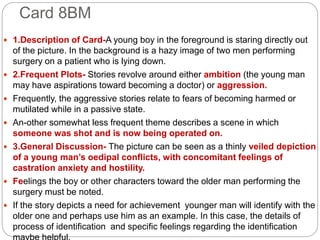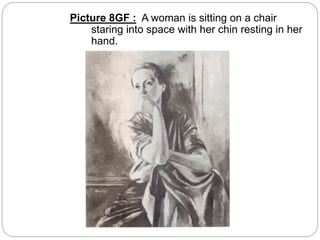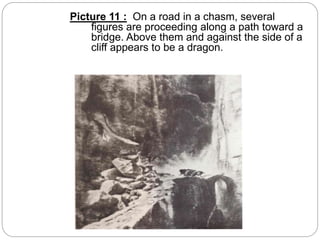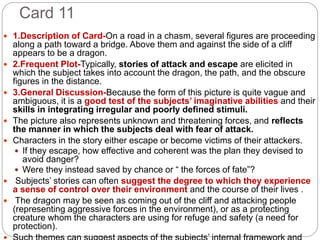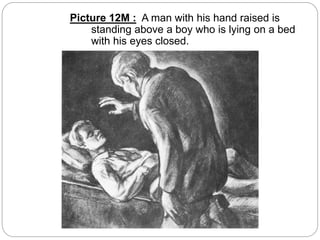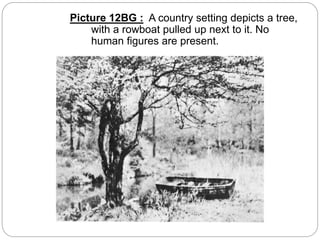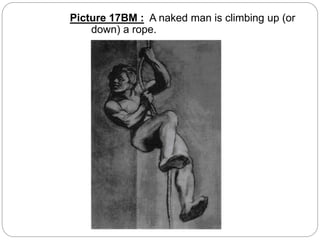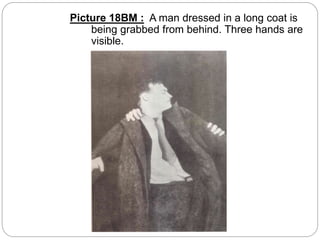The document discusses Murray's Thematic Apperception Test (TAT) cards and their significance in psychological assessment, highlighting the lack of formal norms and the need to consider variations in responses. It provides a detailed analysis of various TAT cards, including descriptions, common plots, and general discussions regarding the insights they offer into individuals' personalities and relationships. The document emphasizes the importance of recognizing themes such as impulse control, authority, and interpersonal dynamics revealed through the subjects' stories built around the cards.
